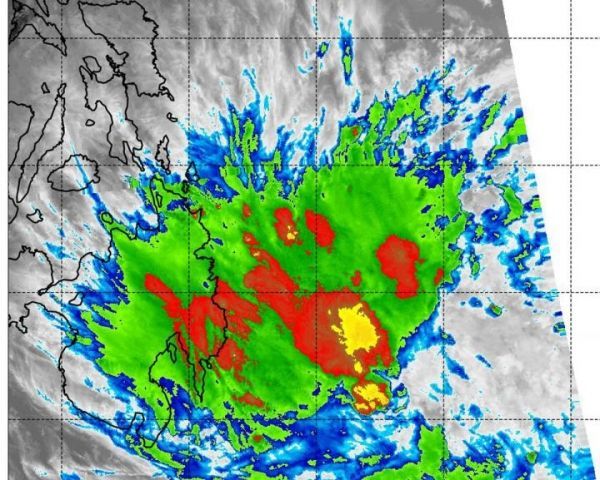Tropical Depression 03W has dissipated in the Northwestern Pacific Ocean, but not without one last show of strength on infrared satellite imagery.
NASA-NOAA’s Suomi NPP satellite provided an infrared look at Tropical Depression 03W that revealed a burst of strong storms pushing high into the troposphere. 03W’s circulation center was also displaced from the bulk of clouds and precipitation. That’s an indication that vertical wind shear is affecting the storm.
What is Vertical Wind Shear?
In general, wind shear is a measure of how the speed and direction of winds change with altitude. In order to understand how it affects a tropical cyclone or hurricane, think of a tropical cyclone as a series of vertically stacked tires, all rotating. As you go up from the ground, each tire represents the rotation of the storm’s center at a higher level in the atmosphere. The different levels of rotating winds in the center of tropical cyclones need to be stacked on top each other to strengthen. If there are winds higher up that push some of the tires askew near the top, it affects the balance and rotation of the tires below. That’s what happens when vertical wind shear pushes against a storm. It pushes the center and weakens (or wobbles) the rotation of all of the tires.
Read more at NASA/Goddard Space Flight Center
Image: On March 18, 2019 at 1:30 a.m. EDT (0530 UTC), the VIIRS instrument aboard NASA-NOAA's Suomi NPP satellite looked at Tropical Depression 03W in infrared light. VIIRS found coldest cloud top temperatures off-center as cold as or colder than minus 80 degrees (yellow) Fahrenheit (minus 62.2 degrees Celsius). (Credit: NASA/NRL)


